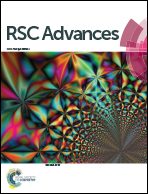Eu2+-activated full color orthophosphate phosphors for warm white light-emitting diodes
Abstract
Eu2+-doped RbBaPO4, NaCaPO4 and CsMgPO4 orthophosphate phosphors were studied. X-ray diffraction (XRD) patterns analysis indicated all of the phosphors could be obtained in a pure phase by the solid-state reaction method. The photoluminescence emission (PL) spectra revealed that the phosphors showed broad-band blue, green and red emission with peaks at near 430 nm, 510 nm and 630 nm under a 340 nm UV lamp, corresponding to RbBaPO4:0.03Eu2+, NaCaPO4:0.01Eu2+ and CsMgPO4:0.07Eu2+ samples, respectively. A white light-emitting diode (w-LED) lamp, fabricated by the three samples combining a 370 nm n-UV chip, presented a high color-rendering index (CRI) of 86, as well as a warm correlated color temperature (CCT) of 2751 K. The results indicated that Eu2+-activated full color versatile orthophosphate phosphors and mixing strategy of the similar hosts will have potential use in the design of white LEDs.


 Please wait while we load your content...
Please wait while we load your content...